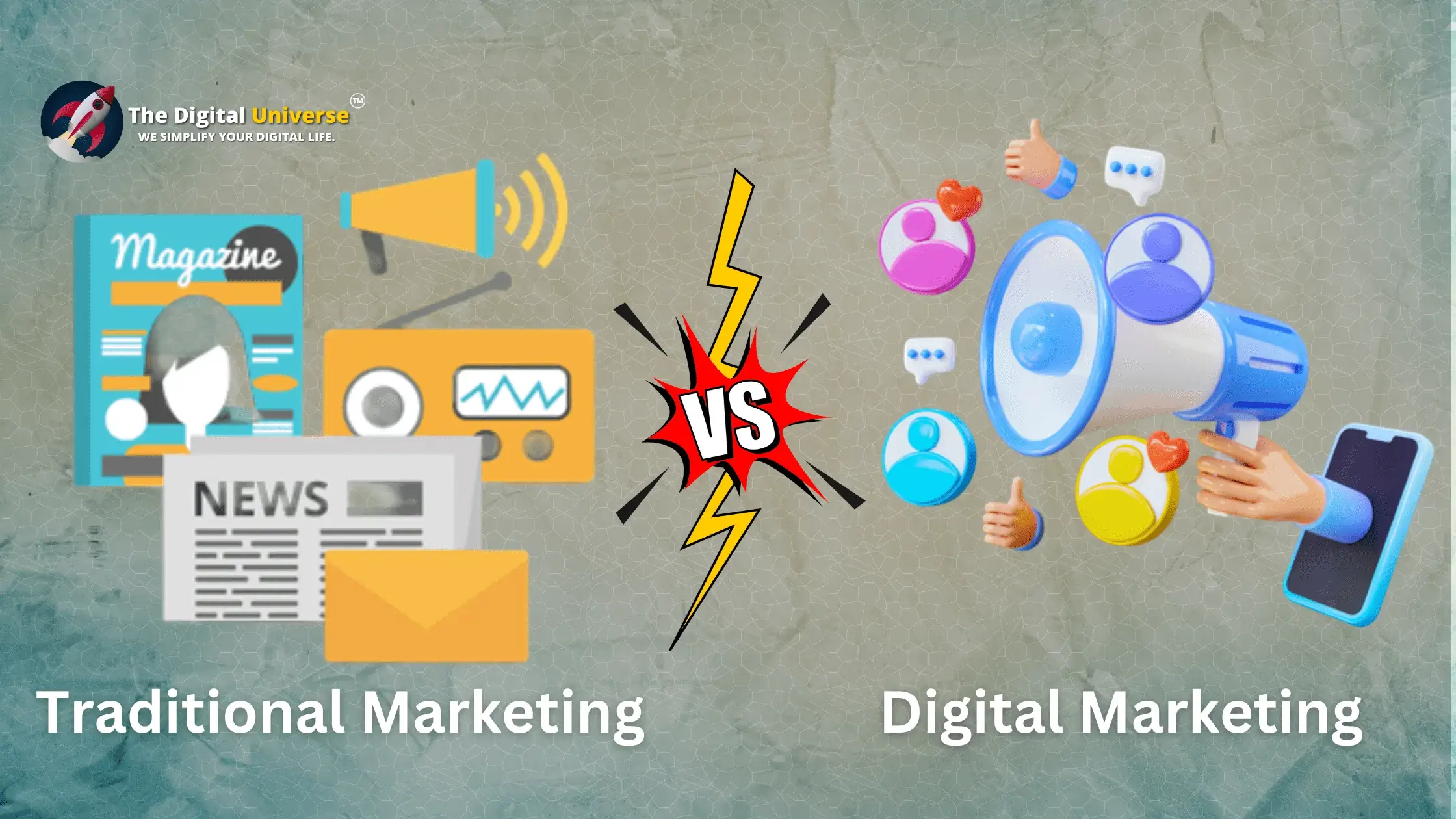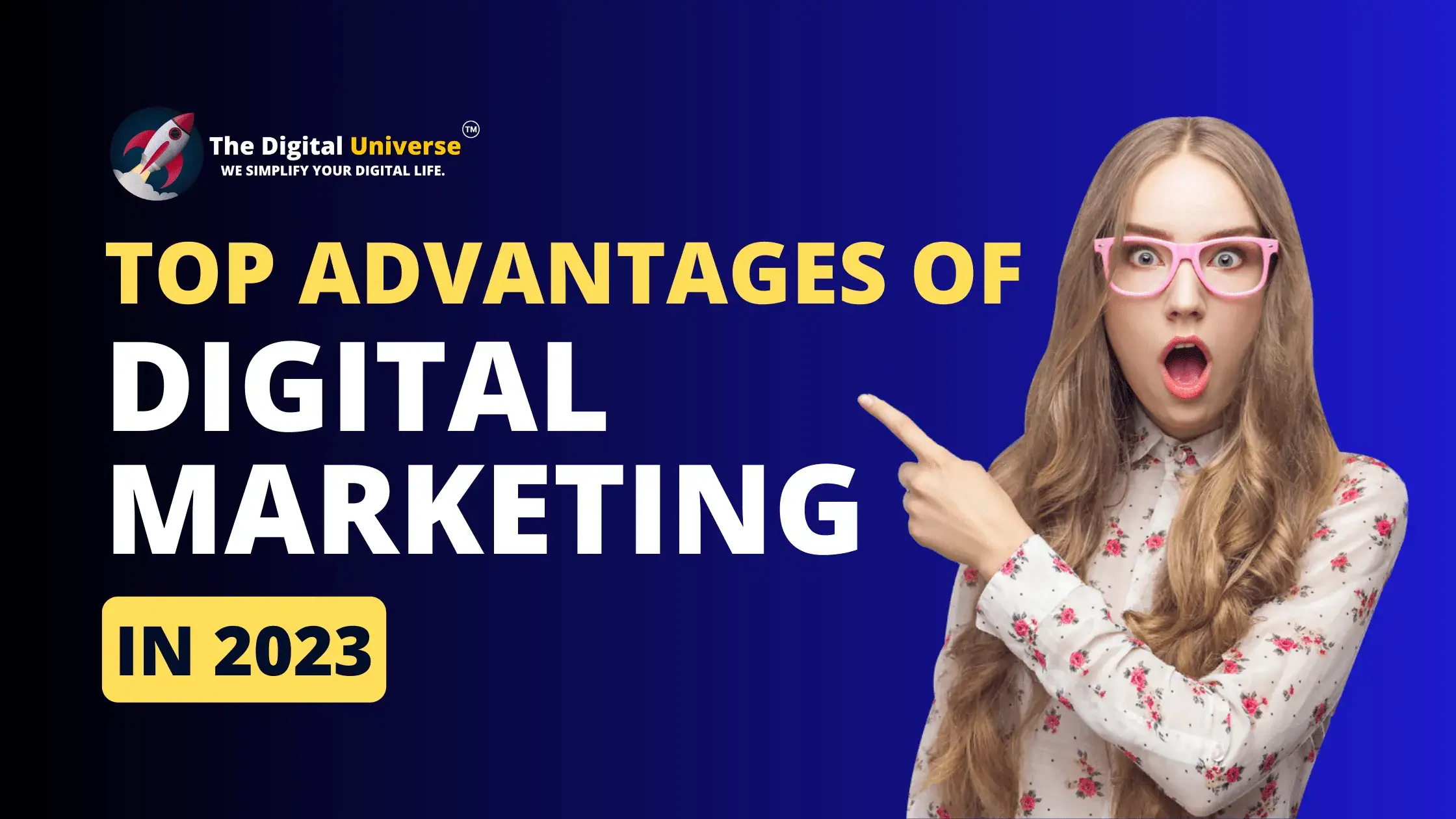
With the rapid advancement of technology, traditional marketing methods have started to take a backseat, making room for the rise of digital marketing. This article delves into the nuances and disparities between digital and traditional marketing, shedding light on their unique characteristics and benefits.

What is Difference Between Traditional Marketing and Digital Marketing?
Understanding Traditional Marketing
Traditional marketing refers to conventional marketing techniques that have been in use for decades. It encompasses various offline channels, such as print media, television and radio advertising, and outdoor advertising. Before the rise of digital marketing, traditional marketing was the primary method of reaching and engaging customers.
The power of traditional channels
- Print media: Newspapers, magazines, and brochures have been staple advertising tools for businesses for a long time. They allow businesses to target specific audience segments based on demographics and interests.
- Television and radio advertising: Television commercials and radio spots provide a widespread reach and captivate audiences through audiovisual storytelling.
- Outdoor advertising: Billboards, bus stop ads, and banners attract attention in public spaces, exposing brands to a diverse audience.
The Emergence of Digital Marketing
Digital marketing refers to the use of digital platforms and technologies to promote products or services. It leverages the internet and digital devices to reach a vast audience, engage with potential customers, and drive conversions.
The power of traditional channels
- Rise of the internet and its impact: The internet has transformed the way businesses operate. It has opened up global markets and provided businesses with the opportunity to connect with customers worldwide.
- Social media revolution: The proliferation of social media platforms like Facebook, Instagram, and Twitter has shifted the marketing landscape. These platforms offer businesses the ability to reach targeted audiences, foster engagement, and build brand loyalty.
Key Differentiators between Digital and Traditional Marketing
Targeting and reach
- Granularity in digital marketing: Digital marketing allows businesses to target specific demographics, interests, and behaviors with precision. Through data analytics and consumer insights, businesses can tailor their marketing messages to appeal to individual customers.
- Broad audience in traditional marketing: Traditional marketing techniques tend to have a broader reach, catering to a wide audience with a generalized message.
Cost-effectiveness
- Comparing budget requirements: Digital marketing often requires a lower budget compared to traditional marketing channels. It offers flexible options, allowing businesses to allocate resources based on their specific needs and goals.
- Tracking and optimizing expenses: Digital marketing platforms offer robust analytics tools, enabling businesses to measure the effectiveness of their campaigns and adjust their strategies in real-time. This level of tracking is often not feasible with traditional marketing methods.
Interaction and engagement
- Real-time communication in digital marketing: Digital marketing facilitates instant and direct communication between businesses and customers. Social media, chatbots, and email marketing enable businesses to engage with customers promptly, leading to enhanced customer satisfaction and loyalty.
- Limited interaction in traditional marketing: Traditional marketing methods generally lack the interactivity and real-time communication capabilities of digital marketing. Customer engagement is typically limited to one-way communication through ads or printed materials.
Measurability and analytics
- The advent of data-driven marketing: Digital marketing allows businesses to collect and analyze vast amounts of data, enabling them to make data-driven decisions, identify trends, and optimize their marketing strategies for better results.
- Challenges faced by traditional marketing: Traditional marketing techniques often rely on anecdotal evidence and estimation when it comes to measuring campaign performance and understanding consumer behavior.
Comparative Analysis of Marketing Channels
Digital marketing channels

- Search Engine Optimization (SEO): SEO improves a website’s visibility in search engine results, attracting organic traffic and boosting online presence.
- Pay-per-click (PPC) advertising: PPC enables businesses to display ads to their target audience and pay only when a user clicks on the ad.
- Social media marketing: Social media platforms allow businesses to engage with customers, build brand awareness, and drive conversions through targeted advertising campaigns.
- Email marketing: Email marketing involves sending tailored messages to a segmented audience, nurturing leads, and fostering customer loyalty.
Traditional marketing channels

- Print advertising: Business advertisements in newspapers, magazines, brochures, and flyers continue to play a role in reaching a local and specific audience.
- Broadcast media advertising: Television and radio ads provide businesses with wide exposure and the ability to create impactful audiovisual campaigns.
- Direct mail marketing: Sending physical mail, such as coupons or catalogs, directly to the target audience’s homes or businesses, remains a viable traditional marketing strategy.
- Telemarketing: Telemarketing involves reaching out to potential customers via telephone calls to promote products or services.
Suitability in Various Industries
Digital marketing: a game-changer for specific sectors
- E-commerce and online businesses: Digital marketing is integral to the success of e-commerce platforms, allowing businesses to target online shoppers and compete globally.
- Service-based industries: Digital marketing helps service-focused businesses like restaurants, health care providers, and consulting firms to increase brand awareness, attract new clients, and maintain customer relationships.
Traditional marketing: retaining its value for certain industries
- Local businesses and establishments: Traditional marketing methods are still effective for targeting a local audience, such as small retail shops, local restaurants, or community events.
- Niche markets: In niche industries with a specific target audience, traditional marketing can be valuable due to its ability to reach a concentrated customer base.
The Synergy of Digital and Traditional Marketing
Recognizing the power of integration
Digital and traditional marketing can complement each other when integrated strategically. By combining the strengths of both approaches, businesses can maximize their reach and engage with customers through multiple touch points.
Strategies for combining the best of both worlds
- Cross-promotion: Integrating digital marketing efforts with traditional campaigns by featuring digital channels in print or broadcast advertisements, encouraging customers to engage further online.
- Omni-channel marketing: Creating a consistent brand experience across all marketing channels, ensuring a seamless transition between digital and traditional touch points.
Conclusion:
The world of marketing continues to evolve, and both digital and traditional marketing avenues have their unique benefits. Digital marketing provides precise targeting, cost-effectiveness, interactivity, and track able results, while traditional marketing still holds value for local businesses and niche markets. However, recognizing the synergy between these approaches and adopting a hybrid strategy can yield the best results for businesses in today’s diverse marketing landscape.
FAQs
Traditional marketing refers to conventional marketing techniques that have been used for decades. It includes offline channels such as print media, television and radio advertising, and outdoor advertising. Before the rise of digital marketing, traditional marketing was the primary method of reaching and engaging customers.
Digital marketing refers to the use of digital platforms and technologies to promote products or services. It leverages the internet and digital devices to reach a vast audience, engage with potential customers, and drive conversions.
Yes, digital and traditional marketing can be integrated strategically to maximize reach and engage with customers through multiple touch points. Cross-promotion and omni-channel marketing are some strategies that combine the strengths of both approaches.
The choice between digital and traditional marketing depends on various factors such as the target audience, industry, budget, and marketing goals. Recognizing the synergy between the two approaches and adopting a hybrid strategy can often yield the best results in today’s diverse marketing landscape.
To navigate the evolving marketing landscape effectively, businesses should stay updated with the latest marketing trends, analyze their target audience, set clear goals, and experiment with different marketing strategies to find the most effective approach for their brand’s success.


